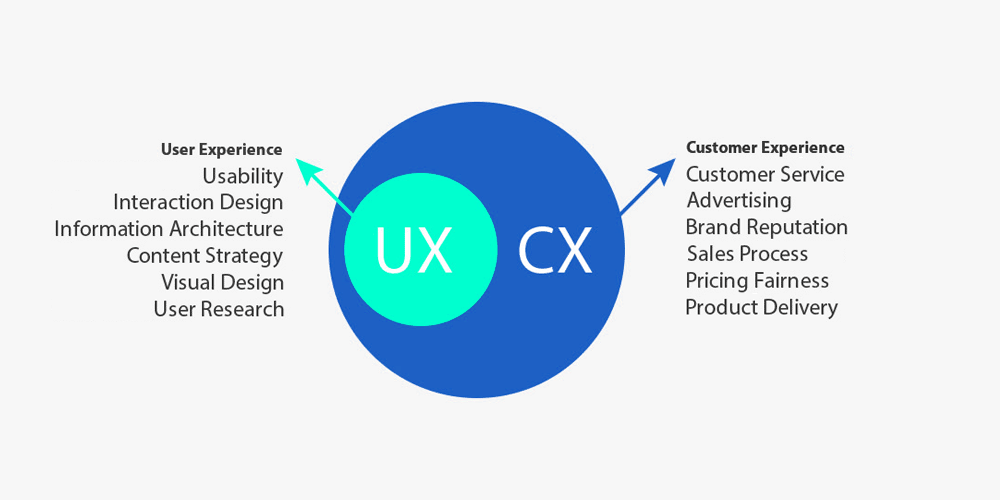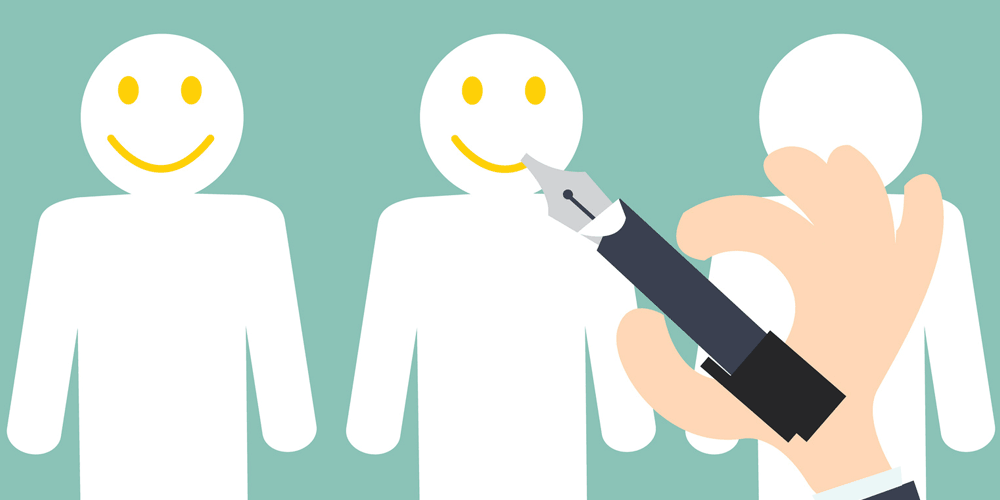"User Experience" and "Customer Experience" sound pretty similar and often used interchangeable. But are they really the same? No. Are they similar? No.
They may seem to be similar at first, but what they mean could be everything but the same.
UX (user experience) and CX (customer experience) are two things that complement each other. While there is a big difference between the two, both however are closely related but not at all similar. The two has helped in creating many techniques were for leveraging customer management, customer journey mapping, etc., and they can also be found in user experience and service design.
As a matter of fact, both user experience and customer experience are something that contribute to one's great success measurement.
First, to detail the two's differences: they look pretty forward. Customer experience is something more general, and could be defined as a sum of all experiences an individual has in relationship with a brand, service, content, interaction, product, and so forth. User experience is more specific, and it can only be measured by metrics after the interaction has happened.
To break them down:
User experience deals with individuals interacting with a product, and the experience they receive from that interaction. UX is measured with metrics like: success rate, error rate, abandonment rate, time to complete task, and clicks to completion.
Customer experience takes a wider picture that encompasses all the interactions an individual has with something. This can be measured in: overall experience, likelihood to continue of use, and likelihood to recommend to others. In essence, UX is part of a broader CX, but CX contains some aspects outside of a product that UX doesn't.
Here is the diagram to explain the two:

For something to have a great UX, it needs to give customers: information quickly and easily, the desired task and the ability to finish it, the ability to use search and do certain interaction, etc..
On the other hand, for something to have a great CX, it needs to be: pleasant, professional, helpful, good in expressing its positive state about the overall experience, confidence, etc..
The Interaction Between User Experience And Customer Experience
How the two work together can be gauged in more than several ways. While it could be difficult to measure them, the complexity of individual experience can be taken account when laying the foundation for customer-centric processes, services, interactions and ways of doing business.
This combined approach enables the identification of the core priorities, enabling the detection of poor experiences. This in turn will show the relationship between UX and CX.
The definition of the overall experience when using a specific product or others, include the usage and experience rather than a single process. This is the area of conversion, a term that typically needed to measure the success of a campaign.
Now while the two terms differ, there are times that they could really be used interchangeably. This depends of the industry and the field of expertise of the researcher/experts.
But when it comes to the differences, one of the areas where this becomes clear: in UX, it's more of how long it takes to fulfill a specific task and how well it converts. But in CX, it's looking more into the probability of recommendation, emotional parameters and others.

Connecting User Experience And Customer Experience
Despite they have their own differences, they are both increasingly connected.
An example to describe how user experience and customer experience now closely related, can be illustrated when a customer does a internet search for a service, and finds XYZ. He then navigates XYZ's website to search for the information he desires and finds it. He found the site easily, and the interface is not alienating. He effortlessly navigated though the links and headings. He could find everything he wanted in less than 5 minutes at the site. The customer was happy.
Here XYZ wins in user experience.
After using XYZ's service for a month, that same customer had a question about something, and he thought that it would be best to call XYZ rather than submitting a form. So he called XYZ for some pointers. After being on hold for more than 10 minutes, the customer was then connected to a representative. After an explanation to the problem, the representative was unable to answer him. The customer was then redirected to another representative on XYZ that works in a different department, and that too couldn't answer his question. After an hour, the customer was finally able to get his answer, and that was the representative asking him to send his form to an email of the representative. The next day, the customer was then notified, telling him that his form was rejected due to incomplete information.
This time, XYZ loses in customer experience.
That customer won't likely to return to XYZ because the overall interaction was unpleasant and difficult. In his last interaction, he have to call XYZ back with follow-up questions and additional assistance. Things look ugly for the customer, and he probably won't at all recommend XYZ to anyone. What's more, he's likely to speak negatively about his experience as a whole.
That mock scenario can also work the other way around. If XYZ has great advertising and good brand recognition, great sales team, good customer service representatives and all CX-related items perfected. But this time, it has a bad website, not properly designed mobile app, not secured system, bad software rating and other of its UX-related not performing well. At this example, XYZ's overall CX could fail.
Despite UX is just a small part of CX, its role is getting significantly larger with technology aiding it to become more prominent.
UX is really a component of CX. Each play an important role in the overall success of a program, the reputation of a brand, and customers' loyalty to a brand. Failures in either area can lead to a bad customer experience overall.
Further reading: Understanding "Customer Experience", And How It Involves Personalization And Emotion
